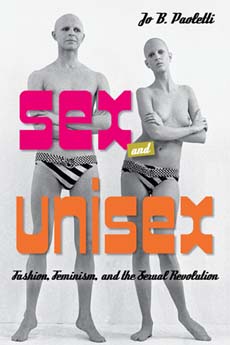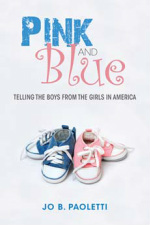| In observance of Women's History Month, Indiana University Press interviewed me about my latest book and my thoughts about --um -- sex and unisex. Enjoy. (That's me with my thoughtful face and my fancy new glasses.) |
|
0 Comments
Here we go again: another blogger reaction to the popular message that there is something wrong with dressing a little girl in pink. The author lays out all the reasons she wants her daughter to like blue AND pink, tiaras AND telescopes. Good, so far. But then she adds, "Femininity is not less than masculinity. It is a different kind of strength, but it is powerful and wonderful and deserves our respect." What's wrong with that?
Femininity and masculinity are the names for the expressions traditionally associated with biological sex. But these expressions -- from liking pink to hating to ask directions -- are cultural, and do not always map precisely with biology. The call for more choices and fewer stereotypes is not about undervaluing girls or hating pink. I don't hate pink. The only color I truly hate is that yellowish green that looks like snot. I believe that people should be treated with love and respect, regardless of sex, gender expression, or sexuality. Finally, I believe that sex, gender expression, and sexuality are not binaries, much less opposites. I *do* hate essentialism ("girls naturally like pink"). I also think that when we stereotype something as "masculine" or "feminine", we ignore real and important variations in human nature and expression. No one should hate pink; it should just be a color. Save the hate for snot green. The first thing I noticed was the nipples. Maybe you did, too; after all, how often do you see naked breasts on a book cover? The image chosen for "Sex and Unisex" was not my first choice -- I had suggested another, more covered-up photo from the same 1970 Rudi Gernreich collection. As it turned out, that image was not available, so the brilliant folks at Indiana University Press suggested this one. (H/T to jacket designer Jennifer Witzke for the splendiferous marriage of image, color, and font.)
I immediately googled "nipples on book covers" and learned that they "aren't done", that Amazon might not approve, but that "Germans love nipples on book covers". But I also realized that the image was perfect. It contradicts the popular trope that "unisex" anything results in the erasure of differences. (Oh, really?) Sometimes yes, and sometimes no. Ungendered, genderfree, androgynous, neutral, genderbending, gender creative, nonbinary: they all look different on different bodies. The thong bathing suit (also designed by Gernreich) was originally intended to be unisex. Think about that the next time someone worries that unisex will make it impossible to "tell the boys from the girls". So yes, the book has nipples. Brustwarzen. Telillas. Capezzoli. How very unisex. |
Jo PaolettiProfessor Emerita Archives
January 2023
Categories
All
|



